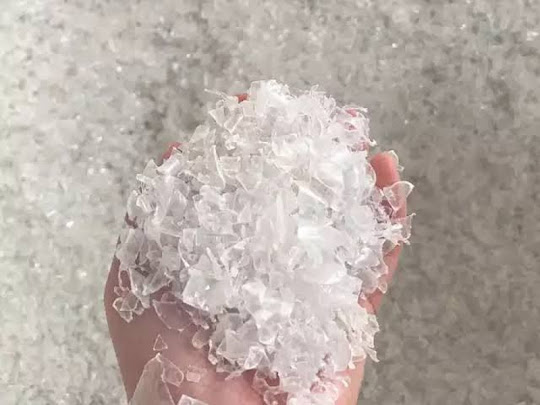Recycled PET flakes: Mechanical vs. Chemical Recycling - What’s Best for PET?
The world is shifting towards sustainable solutions. Recycled PET flakes have become a key player in reducing plastic waste. PET (Polyethylene Terephthalate), commonly used in bottles and packaging, can be recycled through two main methods: mechanical and chemical recycling. But which method is better for the environment, efficiency, and product quality? Let’s break it down.
Understanding the Basics:
Before diving into the comparison, it’s important to understand what each recycling method involves:
1. Mechanical Recycling
1.1. It involves cleaning, shredding, and melting PET waste.
1.2. Produces recycled PET flakes used in textiles, packaging, and more.
1.3. Cost-effective and widely used.
2. Chemical Recycling
2.1. It breaks PET down into its original monomers using chemical processes.
2.2 Allows for near-virgin quality plastic.
2.3 More complex and expensive.
Mechanical Recycling: The Practical Choice
Mechanical recycling is the most widely used method today. It’s simple, efficient, and widely adopted worldwide.
Key Benefits:
1. Lower cost and energy consumption
2. Quick processing time
3. Ideal for clear, uncontaminated PET waste
4. Produces recycled PET flakes suitable for many non-food applications
However, mechanical recycling has its limitations. It can degrade the quality of PET over time, and it struggles with contaminated or coloured plastics.
Chemical Recycling: The High-Tech Alternative
Chemical recycling is gaining attention for its ability to handle complex and contaminated polyethylene terephthalate (PET) waste. It breaks down PET into its basic building blocks, which can then be re-polymerized into high-quality plastic.
Key benefits:
1. Produces near-virgin quality PET
2. Handles mixed or coloured plastics
3. Expands the range of recyclable materials
4. Supports closed-loop recycling systems
Despite its advantages, chemical recycling is still in its early stages of development. It requires more energy, higher investment, and advanced infrastructure.
Comparing the Two Methods:
Here’s a quick side-by-side comparison to help understand the strengths and weaknesses of each method:
Feature | Mechanical recycling | Chemical recycling |
Cost | Low | High |
Energy Use | Low | High |
Output quality | Moderate | High (near-virgin) |
Contamination Tolerance | Low | High |
Commercial readiness | Widely adopted | Emerging technology |
Use of recycled PET flakes | Common in textiles, packaging | Can be re-polymerized for food-grade use |
Which One Is Best for Recycled PET Flakes?
The answer depends on the application. For large-scale, cost-effective recycling, mechanical recycling is the go-to method. It’s perfect for producing recycled PET flakes used in non-food packaging, textiles, and construction materials.
On the other hand, chemical recycling is ideal when high purity and quality are required, especially for food-grade packaging or when dealing with contaminated PET waste. It also opens the door for a circular economy by allowing recycled PET flakes to be reused indefinitely without quality loss.
The Future of PET Recycling
Both methods have a role to play in the future of sustainable plastic use. As technology advances, we may see a hybrid approach where mechanical recycling handles clean waste, and chemical recycling tackles the rest.
For now, recycled PET flakes remain a powerful solution in reducing plastic pollution. Whether produced mechanically or chemically, they help brands and industries move toward a greener, more circular future.
.jpg)
.jpg)
.jpg)
Comments
Post a Comment